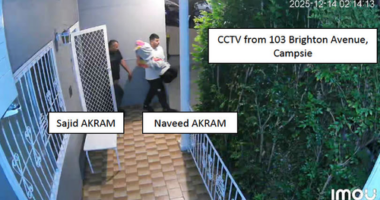Share this @internewscast.com
Offshore gas companies are pressured by critics of the oil and gas sector to limit noise during vital migration periods and rely on this data to pause drilling operations when whales are nearby.
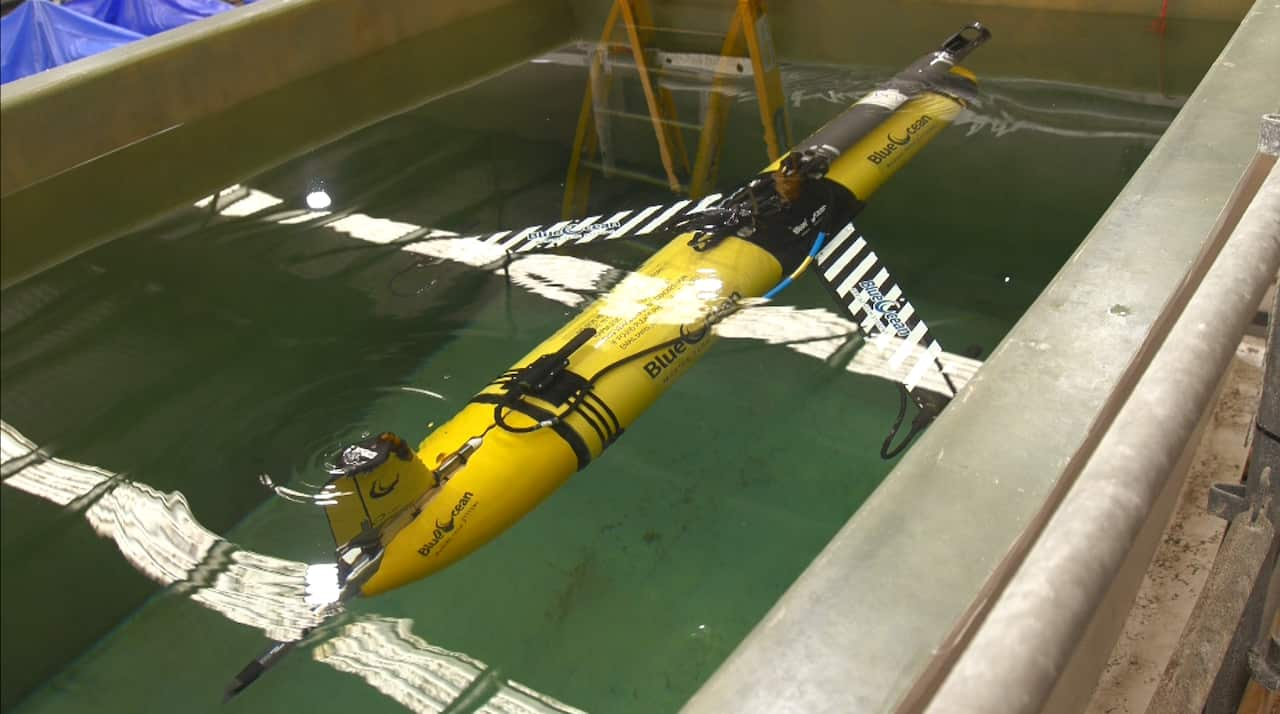
A yellow underwater glider undergoes buoyancy testing. Source: SBS News / Christopher Tan
“These unmanned underwater vehicles can stay at sea for three to four months on a single battery charge,” Mike Deeks, a former Australian Navy submarine commander who now heads the company making the drones, Blue Ocean Marine Tech Systems, says.
“And very quietly, gather intelligence.”
AUKUS and the ‘poorer cousin’ of submarines
AUKUS is built on two main elements: nuclear-powered submarines (Pillar 1) and advanced defense technologies, including artificial intelligence, hypersonics, and autonomous systems (Pillar 2).
“We are not moving fast enough on either pillar, to be honest,” he said.
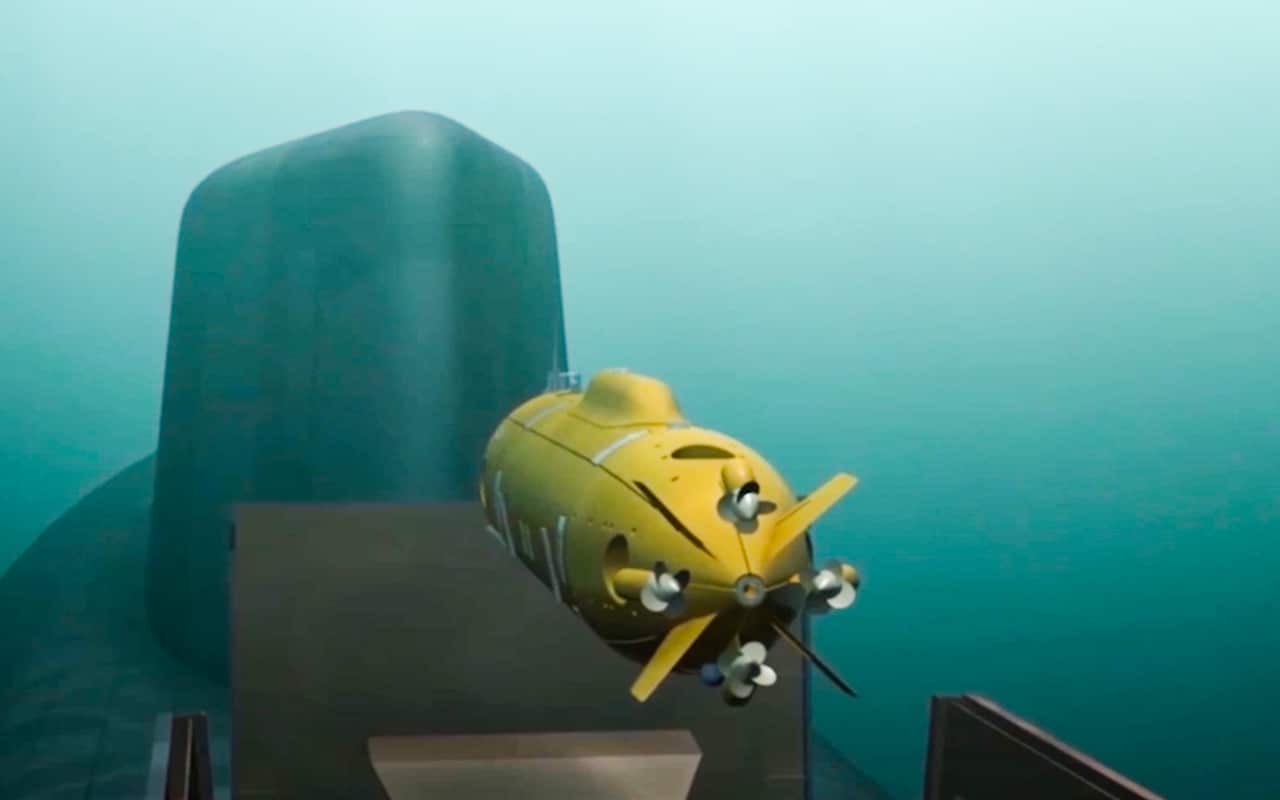
A 2018 computer simulation displays a Russian nuclear-powered underwater drone being launched from a submarine. Source: Supplied / RU-RTR Russian Television/AP
“There has been a degree of risk aversion and caution that is slowing down the delivery of those technologies into an actual deployed capability.”
“Australia’s future undersea battlespace will likely feature a combination of nuclear-powered, though not nuclear-armed submarines, alongside underwater drone capabilities,” he mentioned.
Lessons from Ukraine
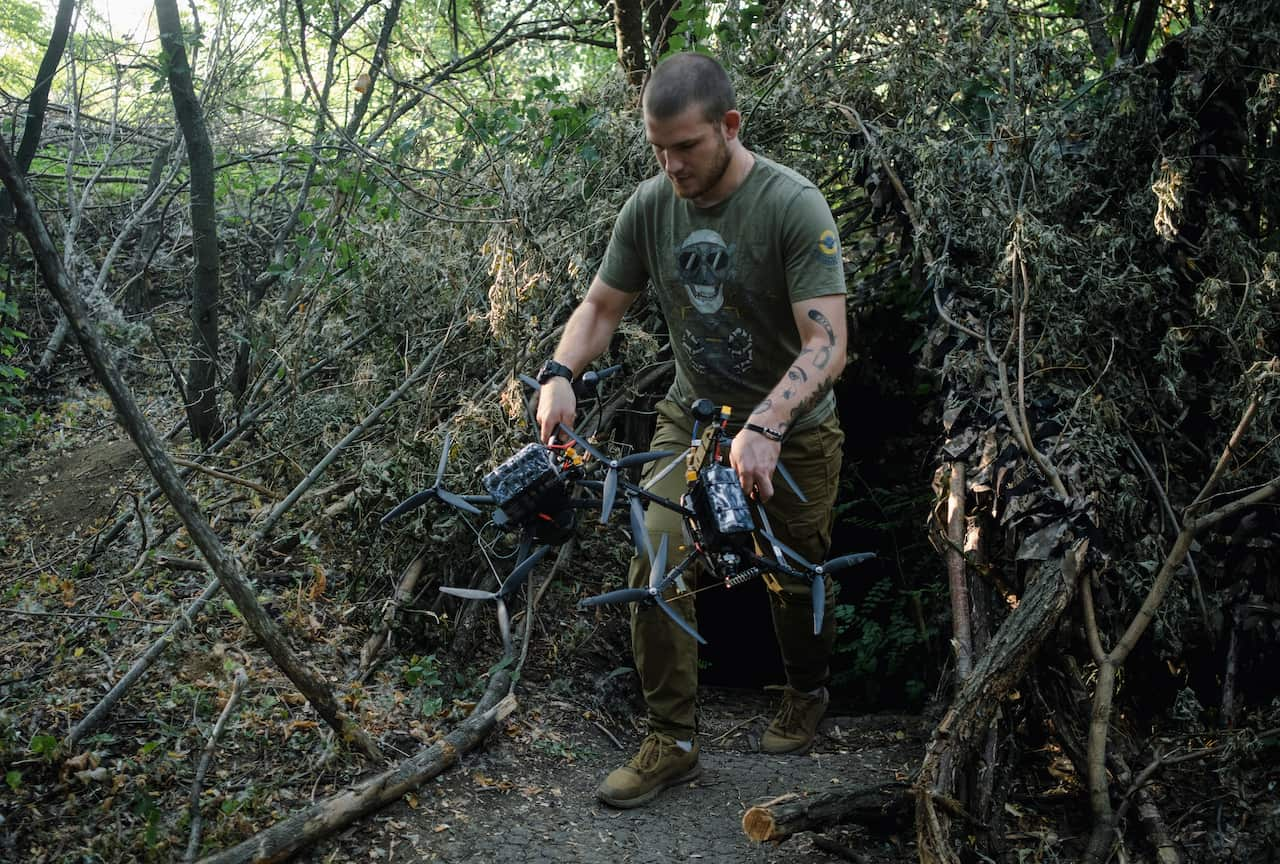
A Ukrainian pilot readies drones for an attack mission on a frontline near Chasiv Yar city in the Donetsk region, during late July. Source: EPA / Sergey Shestak
According to the BBC, Ukraine has also pushed the boundaries at sea. Naval drones such as the Magura V5 — an uncrewed surface vessel capable of carrying 250kg of explosives and travelling at 80km/h — have sunk or damaged several Russian warships in the Black Sea, forcing Moscow to relocate much of its fleet away from Crimea.
However, Davis cautions that the West encounters challenges regarding the deployment of drones. “It’s crucial we focus on rules of engagement and conflict laws regarding the use of these autonomous systems to mitigate risks to civilians,” he stated.
The government’s stance on underwater drones
Planned investments, the spokesperson said, include “large and extra-large uncrewed underwater vehicles to undertake stealthy, long-range missions in high-risk environments, including intelligence, surveillance and reconnaissance, and strike.”
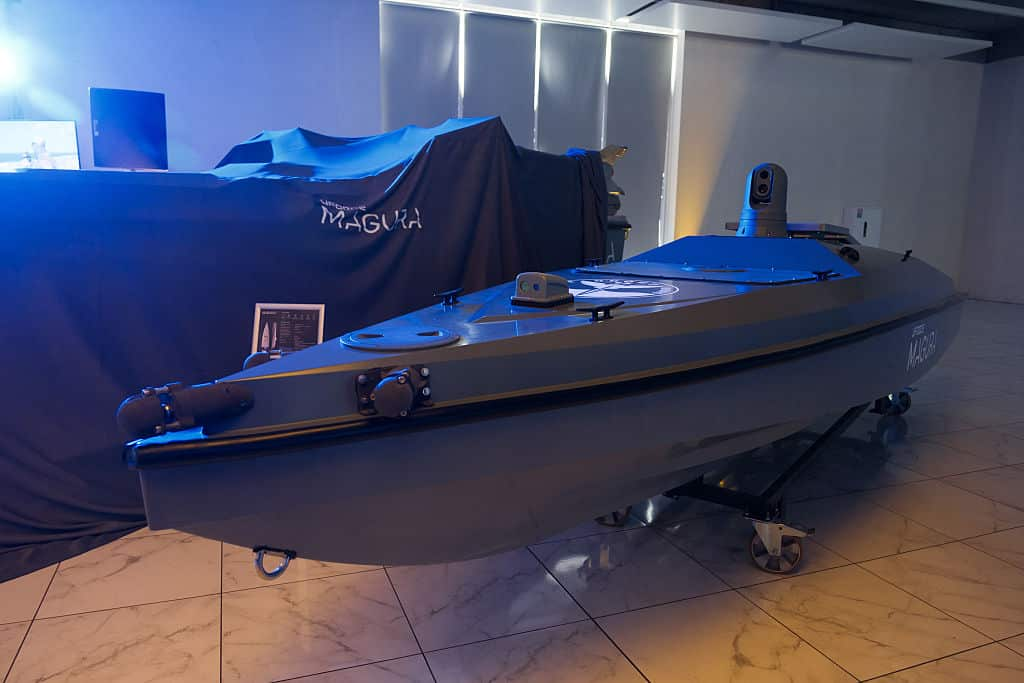
The Magura V5 naval drone operates on the water’s surface. Source: Getty / Global Images Ukraine
The government maintains that both pillars of the AUKUS pact are on track, with Pillar 2 — focused on advanced technologies — already yielding results.
“Pillar 2 is already delivering capability benefits faster than any partner could achieve alone … especially in areas such as autonomous and uncrewed maritime warfare,” the spokesperson said.
“We’ve seen the nature of warfare change dramatically in Ukraine and we are very mindful of that. We are learning lessons from that, and it is very much informing the way in which we are thinking about what capabilities we need to apply in this space.”
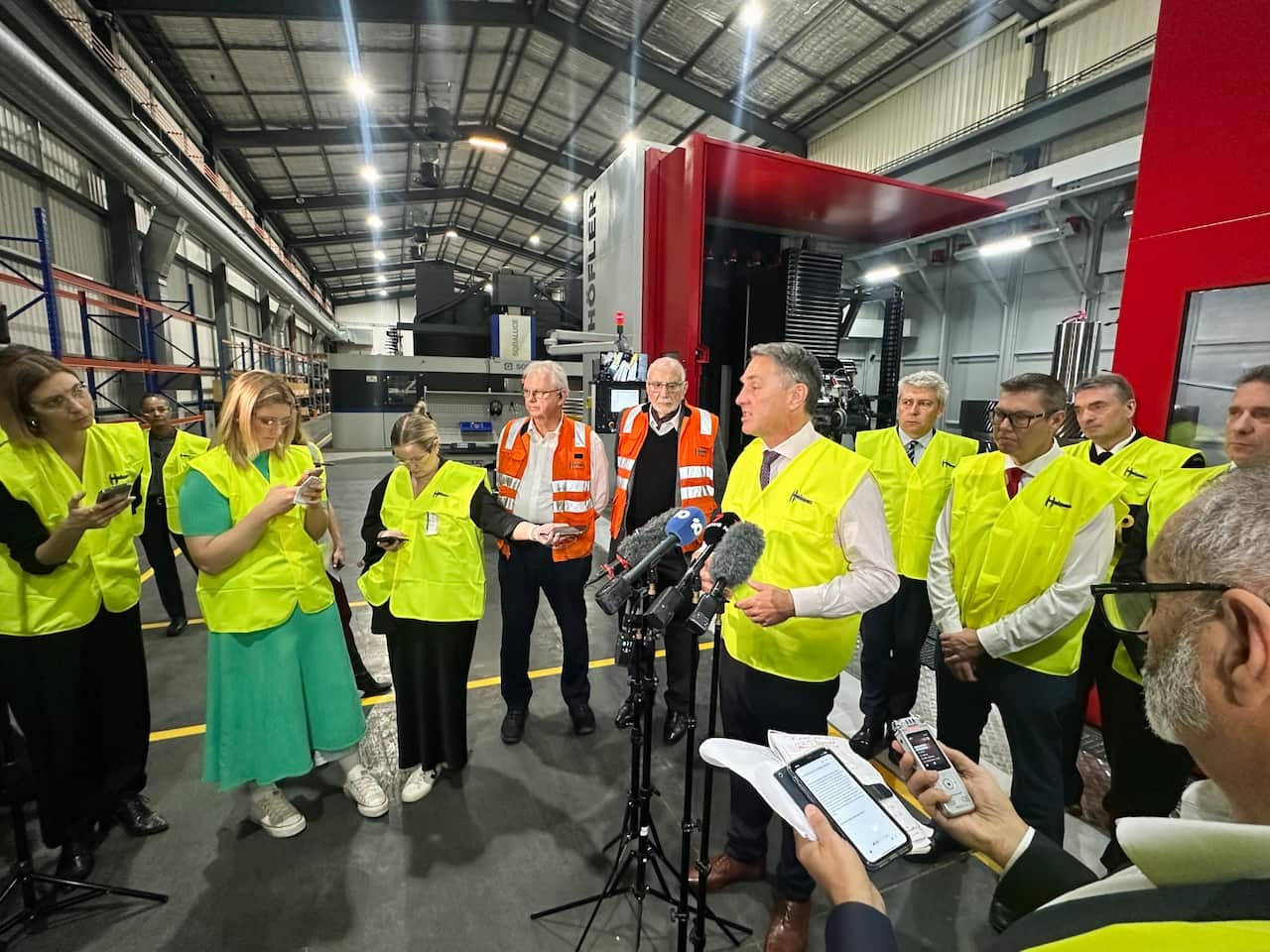
Defence Minister Richard Marles and Defence Industry Minister Pat Conroy at a Perth press conference on Wednesday, announcing support for a local engineering firm while highlighting Australia’s $10 billion investment in drones and autonomous defence systems. Source: SBS News / Christopher Tan
Defence Industry Minister Pat Conroy said the government was investing heavily in the technology.
“The truth is countries around the world are investing in both crewed and uncrewed systems to work with each other because they do different things and they work best together.”
WA locals protesting nuclear
Stop AUKUS WA organiser Leonie Lundy said the deal lacks social licence and said the Australian Submarine Agency has misled people about the exact nature of low-level nuclear waste to be stored in the state as part of the AUKUS deal.

Protesters outside the National Nuclear Submarine Conference in Perth warn against AUKUS, expressing concerns over nuclear escalation and the storage of low-level nuclear waste in Western Australia. Source: Supplied / Stop AUKUS WA
“We were promised a public meeting five months ago, to express our concerns and get answers.
Others raised broader concerns including the potential of making local communities a nuclear target.



